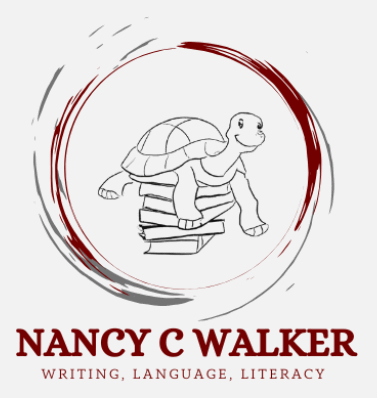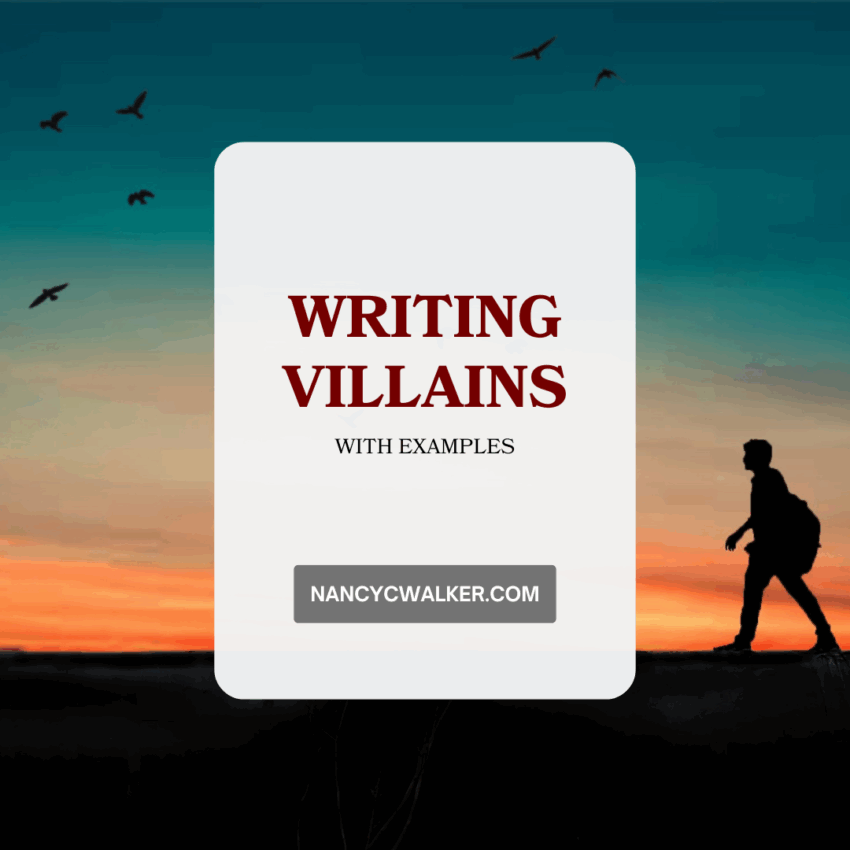This article about villains is part of a series about character development.
A truly well-crafted villain isn’t just a hurdle for the hero. They’re a mirror reflecting profound themes, a catalyst for the protagonist’s growth, and a key ingredient in keeping readers hooked. Forgettable villains can deflate even the most promising narratives.
So, how do you move beyond the one-dimensional “bad guy” and create villains your readers will genuinely love to hate (or at least find utterly fascinating)?
1. Give Your Villains a “Heart” and Deep-Seated Motivation
Villains rarely spring forth as pure evil. Instead, they often embark on a negative character arc, corrupted by their fears and misbeliefs. To write an unforgettable villain, understand their core motivation. This could be a deep misbelief about themselves or the world, or a fatal flaw.
- Villains as Their Own Heroes: Your villain doesn’t see themselves as evil. They are the hero of their own story. They believe that achieving their goal, born from their misbelief, will bring them happiness.
- Example: In Frankenstein by Mary Shelley, the Creature, despite his monstrous appearance and actions, sees himself as a victim of abandonment and seeks only acceptance and companionship, believing it will bring him peace.
- Motivation Beyond the Goal: A goal is what a character wants; motivation is why they want it. Reveal this naturally through their actions as the story progresses.
- Example: Captain Ahab’s relentless pursuit of the white whale in Herman Melville’s Moby Dick isn’t just about catching a whale; it stems from a profound sense of vengeance and a desire to conquer the untamable forces of nature that he believes wronged him.
- Fears as Drivers: Connect the villain’s worst nightmare to their fatal flaw or misbelief from their past. This adds emotional weight to their ambitions.
- Example: A fear of betrayal and abandonment consumes Miss Havisham in Charles Dickens’ Great Expectations, stemming from her traumatic past. Because of her fear, she emotionally manipulates Pip and Estella.
2. Craft Clear Goals and Strategic Plans
An engaging villain needs a clear, concrete, and attainable goal that drives their actions and inevitably brings them into conflict with the protagonist.
- Logical Strategies: Villains should pursue their goals through logical and practical strategies, not convoluted, “brainless” schemes that rely on plot armor. Competent villains are thrilling to watch.
- Example: Professor Moriarty in Arthur Conan Doyle’s Sherlock Holmes stories meticulously plans his criminal enterprises, using his brilliant intellect and strategic foresight to stay one step ahead of the law.
- Competence Breeds Thrills: Audiences like characters who excel at what they do. A competent villain creates thrilling conflict because readers are eager to see how the hero will overcome such a formidable opponent.
- Example: The intellectual chess match between Sherlock Holmes and Professor Moriarty in Arthur Conan Doyle’s stories is captivating precisely because both characters are brilliant and highly competent, making their clashes exhilarating.
3. Embrace Nuance and Complexity
While purely evil villains can serve a purpose (like Lord Voldemort in the Harry Potter series), most modern narratives benefit from more complex antagonists.
- Manipulative Masterminds: To write a manipulative villain, start them not in control and have them gain power by outsmarting others, preying on emotions, or even playing the victim.
- Example: Iago in William Shakespeare’s Othello masterfully manipulates Othello and others, exploiting their insecurities and planting seeds of doubt to achieve his destructive aims.
- Memorable Henchmen: Don’t let a villain’s entourage be forgettable. Give glimpses of their humanity, personality, and chemistry without overshadowing the main villain.
- Example: In J. R. R. Tolkien’s The Lord of the Rings, even minor Orc leaders or Uruk-hai exhibit distinct, albeit brutal, personalities and interactions, adding to the grim reality of Mordor’s forces.
- Purposeful Villain Speeches: Villain speeches should define a purpose, such as delivering crucial information during verbal sparring with the hero, not just info-dumping.
- Example: Satan’s soliloquies in John Milton’s Paradise Lost are effective because they not only reveal his motivations and defiance but also articulate a profound, if twisted, philosophy that challenges divine authority.
- Polarizing Traits: Give your villains extreme and divisive traits that provoke a strong emotional reaction from the audience, whether love or hate.
- Example: Dolores Umbridge in J. K. Rowling’s Harry Potter series is utterly detestable because of her saccharine demeanor coupled with her cruel, authoritarian nature, provoking intense dislike and frustration in readers.
- Mysterious Elements: Hidden secrets, mysterious illnesses, or afflictions can intrigue readers and create suspense.
- Example: Heathcliff’s origins and his time away from the Grange in Emily Brontë’s Wuthering Heights are shrouded in mystery, making him a constantly intriguing and often unsettling character.
4. Avoid Clichés and Enhance Impact
To make your villain unique and unpredictable, avoid stereotypical portrayals.
- Subverting Stereotypes: Instead of the typical “black trench coat” villain, consider hiding them in plain sight, giving the hero a believable reason to spare them, using them as a misdirection or “red herring,” or even giving them a redemptive character arc.
- Example: Javert’s ultimate downfall in Victor Hugo’s Les Misérables subverts the stereotype of the relentless antagonist by revealing his internal conflict and inability to reconcile his rigid moral code with Jean Valjean’s transformation.
- Effective Twist Villains: A twist villain should be both shocking (through setup, hiding, and timing) and satisfying (by adding to the story, not undermining it).
- Example: The revelation of the true identity of the murderer in Agatha Christie’s The Murder of Roger Ackroyd is a masterclass in twist villainy, utterly shocking yet completely satisfying as it recontextualizes the entire narrative.
- Strong Hero-Villain Dynamic: A powerful story requires a strong, meaningful connection between the hero and villain, whether through constant interaction, common ground, shared backstories, or differing approaches to the story’s themes.
- Example: The dynamic between Pip and Miss Havisham in Charles Dickens’ Great Expectations is iconic because their lives are deeply intertwined, and their conflicting perspectives on love, revenge, and social status create a rich and interesting relationship.
- Tragic Villains: Tragic villains are unique because their downfall is often inevitable, driven by trauma, societal pressures, or a “breaking point” where cruelties converge. They can reflect the flaws of the world or mirror the hero’s potential for a negative path.
- Example: Macbeth’s transformation into a tyrannical king in William Shakespeare’s Macbeth is a classic tragic villain arc. His ambition, the witches’ prophecies, and Lady Macbeth’s manipulation influence his fall, making his ultimate fate heartbreakingly inevitable.
- Understanding “Evil”: Rather than portraying objective evil, view evil as an “absence of good” (privation theory) to create nuanced yet genuinely bad characters. This allows for character-consistent “goodness” (e.g., a narcissist loving his daughter but not caring for beggars). Avoid over-sympathetic villains that create “moral muddiness.”
- Example: In Fyodor Dostoevsky’s Crime and Punishment, Raskolnikov’s acts of violence are undeniably evil, yet his complex internal struggles and moments of fleeting compassion illustrate the “absence of good” without making him overly sympathetic or contradictory.
The Broader Impact: How Engaging Villains Elevate the Story
Engaging villains enrich the entire narrative. They provide meaningful conflict, which is crucial as plot structure is often deeply intertwined with the protagonist’s psychological experience and problem-solving journey.
- Character Arcs and Plot Progression: A strong villain provides the necessary challenges to push the hero’s growth and transformation. Heroes need their values tested by brutal dilemmas and must suffer to earn their achievements. A weak villain provides insufficient opposition, making the hero’s journey feel unearned and less impactful.
- Example: In J. R. R. Tolkien’s The Lord of the Rings, the omnipresent threat of Sauron and his forces, provides constant challenges that push Frodo and Sam to their limits.
- 4-Corner Opposition: Use John Truby’s “4-Corner Opposition” by placing the hero and three opponents at the corners of a rectangle. Each character influences the others, creating a cohesive and meaningful web of thematic conflict.
- Example: In George Orwell’s Nineteen Eighty-Four, Winston Smith, O’Brien, Julia, and Goldstein (as an ideological opponent) each impact the others and the hero’s journey, creating a multifaceted narrative of power and rebellion.
- Villain Factory: Avoid overcrowding your story with too many villains, which can lead to pacing issues and defocus the conflict.
- Example: Some literary critics argue that certain sprawling historical novels, while rich in characters, can sometimes dilute the impact of individual antagonists by introducing too many competing forces.
Ultimately, unforgettable villains do more than just oppose the hero; they elevate the entire story, forging a deeper connection with readers and ensuring the narrative’s lasting impact. By delving into their complex motivations, strategic minds, and nuanced portrayals, you can craft villains that truly captivate and challenge, making your stories resonate long after the last page is turned.

